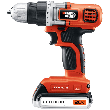I have a general idea about how houses are built, I don't know much about how walls are laid out within a house. With that said, even I know that if I want to hang something heavy on a wall, I need to locate the stud so that I can bang a nail or screw a screw into it to hold the heavy item onto the wall. I've had the misfortune to learn the hard way that you cannot merely hang heavy items into the drywall, since drywall is superficial and will not hold weight. The framing studs of a wall will hold much more weight than drywall, so make sure that you locate them. How? Here are some tips for locating the studs within completed walls:
You can also find ridges and indentations in a wall by laying a lit flashlight against the wall, allowing the light to spread across. As you slowly inch the flashlight across the wall, the light will illuminate most imperfections. A more reliable way to find wall studs is to use an electronic stud finder. Very affordable, as well as accurate, you can find electronic stud finders in hardware or home improvement stores. Follow the directions on the package to use them, but the general premise is to lay the device on the wall, turn it on, and slowly move it along the wall until you hear a beep.

MAX Power! A powerful lithium-ion drill/driver that delivers 0-to-650 RPM and 115 inches-per-pound of torque in a lightweight, easy-to-use package. An anti-slip soft grip and LED worklight makes this tool a delight to use. Check out Black & Decker 20-Volt Cordless Drill/Driver today!
If you are looking to decorate your home and don't want to go with the traditional painting or wallpaper, what are your ...
Discover MoreThere are several areas of most homes that often go bare simply because we don't know how to hang pictures on them. ...
Discover MoreEven the most well-made and properly maintained masonry wall will eventually need a repair or two. If the problem isn't ...
Discover More2013-02-03 04:03:01
Pete Laberge
If you think you know where the stud is, but want to make sure... One trick, if you are dealing with drywall (not plaster), is to find an inconspicuous place on the wall, usually either at the very bottom or the very top. Find a very thin diameter nail or large pin. Something about 1.5 inches long. Hammer or press it into the drywall. If it foes through without stopping there is no wood. It it goes through a bit and stops, you have wood underneath. That is where the stud is. You may need to put the pin in about 4 times, left to right, each time 1/2 inch apart.
Copyright © 2025 Sharon Parq Associates, Inc.
Comments